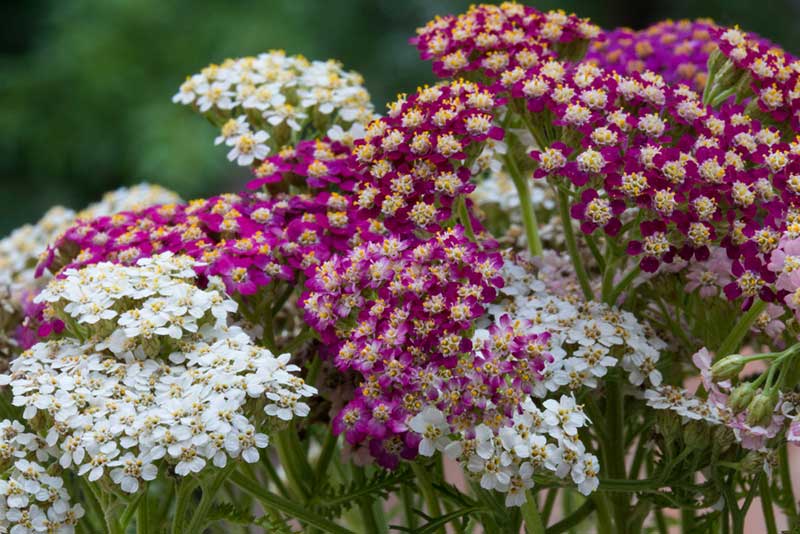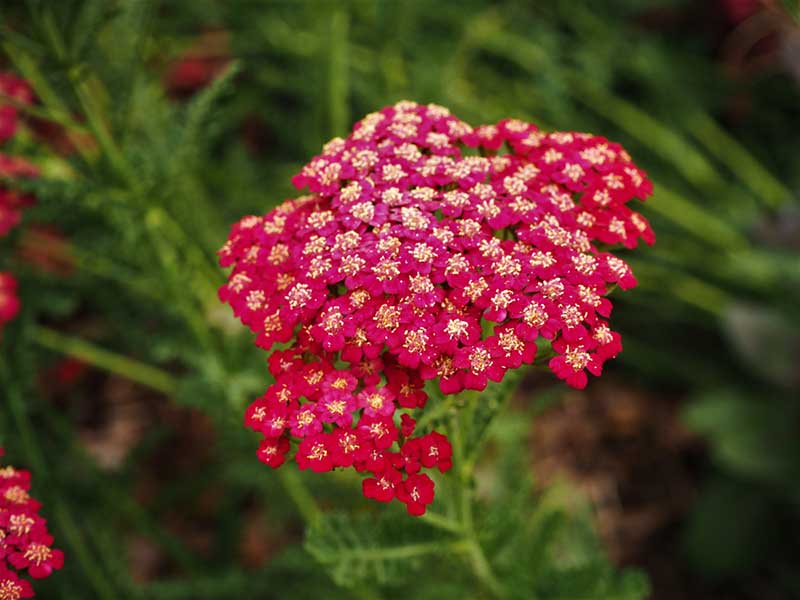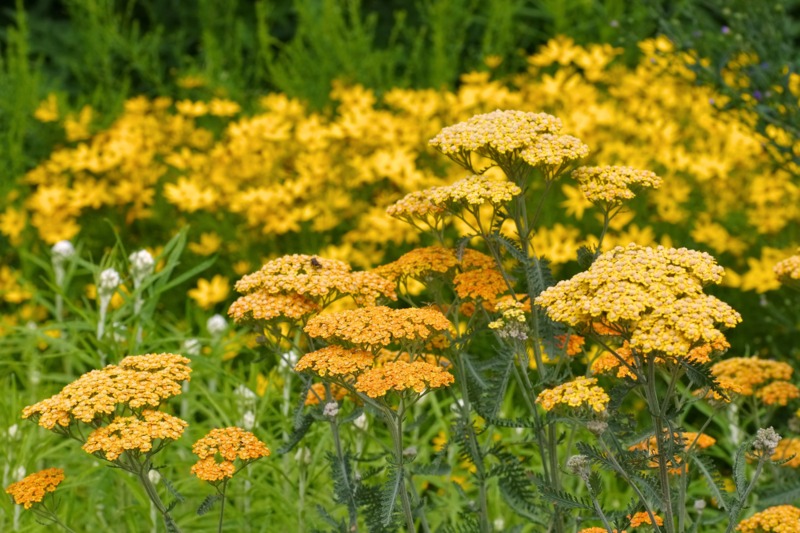
Yarrow is a perennial herb. It normally blooms the first season after planting, when grown from seed. Yarrow may spread through the parent plant, a plant that grows from a single seed, or by cross-pollination from wild yarrow or other yarrow plants. If you prefer a large variety of colors in your garden, you don’t have to worry about where you buy your seeds. However, if you want a garden bed that is mono-colored, it is best to purchase seeds from a reputable seed company that guarantees a single color from each package.
One advantage of allowing your plants to self-seed is that you are almost guaranteed to have a wide variety of colors that change during the growing season. Each year’s bloom production will typically yield a different color scheme, ever changing as the seasons come and go.
When searching for seeds, remember these plants have many names. Nosebleed, gordaldo, old man’s pepper and plumajillo are just a few. Plumajillo means little feather. This Spanish name probably comes from the people in the southwestern US, who admired the texture and leaf shapes and a flower composed of tiny blossoms clustered together. The Latin name for the common yarrow is Achillea millefolium.
You can grow this species and most varieties in zones 3-10. In warm, dry climates, people choose yarrow varieties because they provide year-round beauty. And they attract birds and butterflies. They are drought tolerant, reduce soil erosion, provide a low-maintenance groundcover solution and put out long-lasting blooms that last all summer.
You can also get spring blooms, fall blooms and visual texture during winter months.

Yarrow Care
Yarrow, from the Asteraceae family, is native to temperate regions in Europe, North America, and the Northern Hemisphere. Since this flowering herb does not like wet feet, it grows well in dry climates with poor oil.
Plumajillo is easy to care for, but can develop a white powdery film on leaves, most commonly associated with botrytis mold or powdery mildew. If you notice signs of mold or mildew, apply a fungicide recommended by your local garden center.
Light
The plant thrives in full sun, but can tolerate partial shade. A sure sign your plants are not getting enough direct sun is limp stalks. If you cannot move them to another spot, staking plants may be necessary.
Water
Planted directly in the ground, yarrow varieties require about one inch of water per week. When raised as indoor potted plants or in containers outdoors, water when the soil is dry through the top one-half inch of soil. Water thoroughly and allow the pot to drain before watering again. Avoid overwatering to prevent root rot.
Temperature and Humidity
Yarrow loves warm temperatures (65 F- 75 F). As with all yarrows, they do not like cold drafts and cannot tolerate freezing, but will thrive in temperatures in the 60s. While these plants thrive in humid outdoor conditions, indoor plants don’t like especially high humidity, as it can encourage mildew on the leaves.

Soil
Yarrow prefers sandy loam or sandy clay soil. When planted in a nutrient-rich soil, the herb grows aggressively, and takes on weed-like qualities. These qualities are prefect for groundcover when you need a rapid spread, but not when you want them to stay in a contained area.
Fertilizer
As a low-maintenance plant, you won’t need to fertilize it often. Some people apply a layer of compost once per year to provide a few extra nutrients.
Potting and Repotting Yarrow
Common yarrow species are low-maintenance indoor plants. They happily adjust to outdoor conditions when the weather permits. Some people take them to the outdoors when the weather warms up and then return them to their indoor locations to overwinter.
Use a large pot and a sandy loam or sandy clay potting mix. And only water when needed. Increase the pot size each time you repot to allow for growth.
Propagating Yarrow Plants
Yarrow should be divided every 24 to 36 months. Early spring is the ideal time to separate your yarrow plants. You can dig up the entire plant and pull apart individual sections that have set roots. Or, dig down until you find a root section and only remove that piece from the parent plant.




